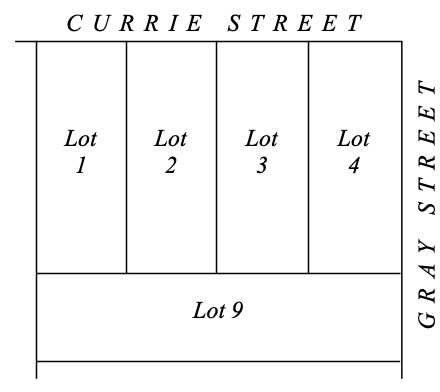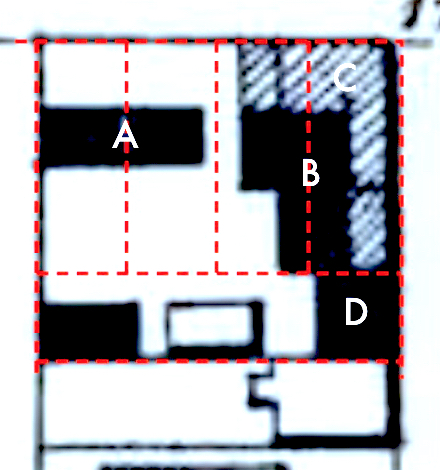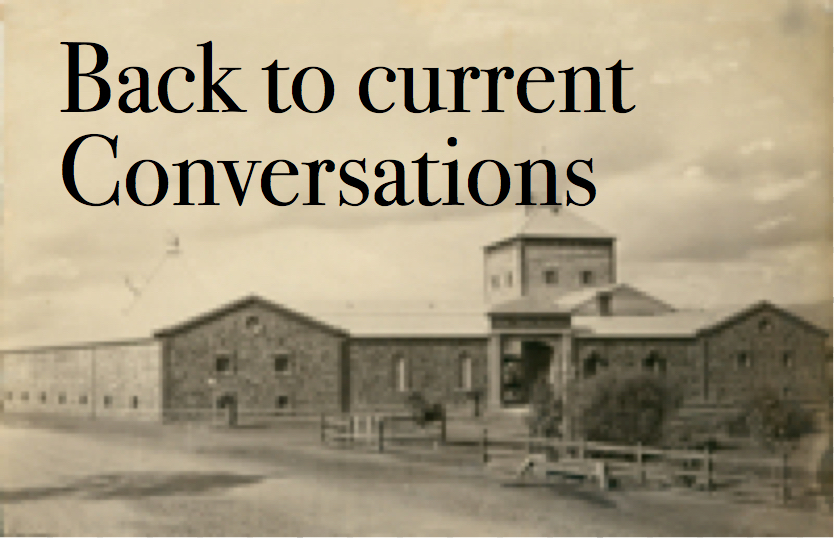

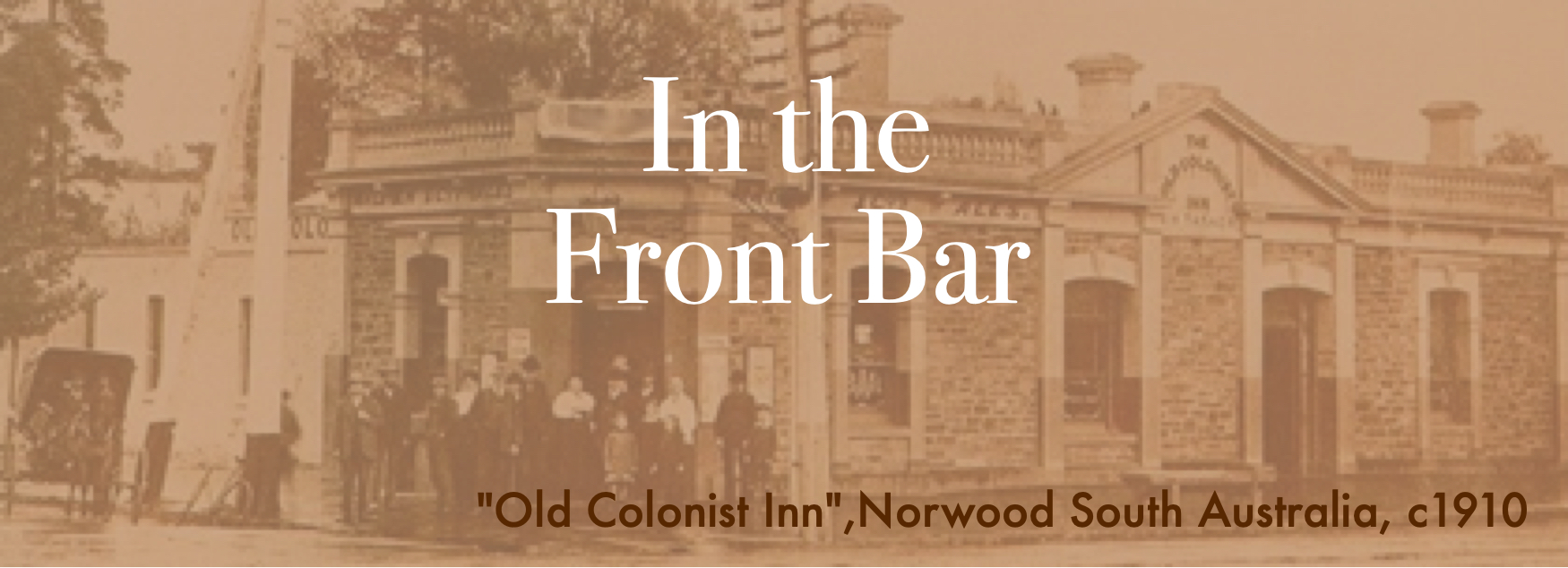
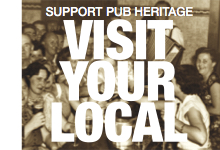
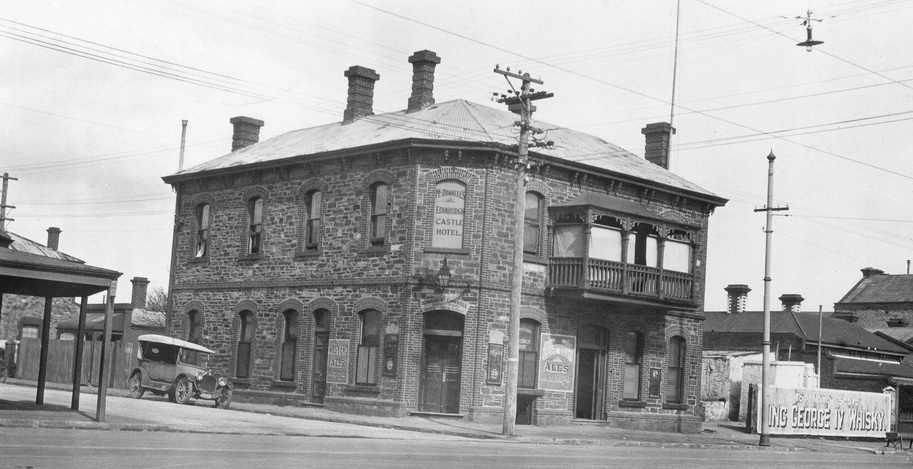
The Edinburgh Castle Hotel in approximately 1926 [State Library of South Australia, B3733]
Is the Edinburgh Castle South Australia's oldest licensed pub?
Since the mid-nineteen eighties, the generally accepted view is that the Edinburgh Castle* in Currie Street is the first and therefore oldest continuously licensed public house in Adelaide.
In 1986 Bob Hoad, a respected authority on all things related to pubs and publicans in South Australia and author of the encyclopaedic Hotels and Publicans in South Australia 1836-1984 (1986) proposed that "the pride of place of being the first person licensed to retail liquor in South Australia falls to one John [sic] Guthrie of Adelaide. He held License No.1 from 31 May 1837 for premises known as Guthrie's... [which] was located at the south-western [sic] corner of Currie Street and Gray Street, and is now known as the Edinburgh Castle."(1) Two years later, in a monograph written specifically to "identify South Australia's oldest hotel by identifying the State's first licensed Publicans, and the title and location of the premises,", he rejected the suggestion that the oldest license belonged to the Royal Admiral Hotel in Hindley Street (2) on the grounds that the author "neglected to establish the location of Guthrie's premises, thereby failing to identify the connection between Guthrie and the Edinburgh Castle". Again Hoad asserted that "the Edinburgh Castle at 233 Currie Street, Adelaide, is on the site of the first licensed premises [my emphasis] in this State, and appears to have had 150 [now over 180] years of uninterrupted trading, therefore it qualifies both as this State's first and oldest surviving licensed drinking establishment." (3) That the Edinburgh Castle "has the distinction of being the oldest continually licensed hotel in South Australia" (4) has been repeated since in the popular press, Government-sponsored web-sites and notably in 2001 in the authoritative Wakefield Companion to South Australian History. (5)
The research reported below challenges this view, ironically on the grounds that the Edinburgh Castle was, in all probability, not on the site of Guthrie's premises. Bob Hoad seems to have made a bit too much of the connection between Guthrie and the Edinburgh Castle and assumed a co-location of premises and licensing continuity that isn;t borne out by a closer inspection of the documentary evidence.
Captain Whiteman Freeman, George Guthrie, Andrew Harriott and "Town Acre 127"
Apart from the minor objection that the first licenses were not legal - the British Government later disallowed the legislation - there can be no doubt that George Guthrie's was the first license issued by the Colonial Secretary on 31 May 1837 "to keep a public house, and to sell in the same, being the house he dwells in, situated at Glenelg or at a house on Section 127 in Currie Street in Adelaide, Wine, Ale, Beer or other Malt Liquors..." (6). Guthrie's was therefore the first "public house" in South Australia however ill-defined by the relevant Act. This is not disputed.
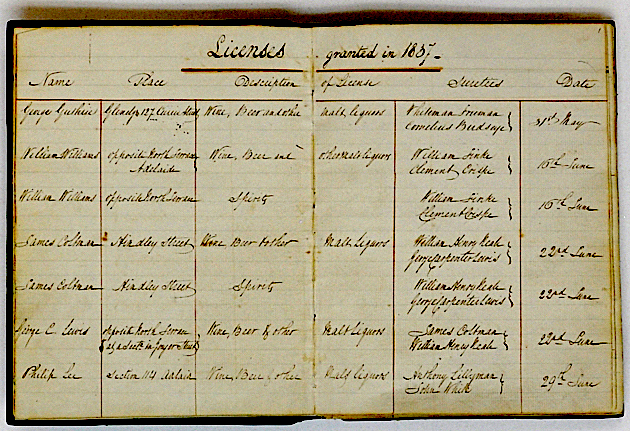
First licenses granted in 1837 [State Records Office, GRG45/13/00000/1 Register of publican's and other licences]
George Guthrie (1814?-1871?) arrived in South Australia in November 1836 and, by May 1837, entered into some sort of partnership with Captain Whiteman Freeman to run a general store on one of the Town Acres, No.127, that Freeman had purchased two months earlier. The partnership lasted until April 1838 when Guthrie advertised for sale his "extensive Stock of WINES, splendid ALE and PORTER in draught and bottle; a quantity of superior FLOUR; Hats, Umbrellas, Tumblers, Groceries of every description, Lucifer Matches, Black Lead Pencils, Clothes Brushes, Potatoes, Onions, a variety of Boots and Shoes, and a few select Medicines direct from Apothecaries Hall, London... An excellent HORSE and DRAY to let on moderate terms" and advised that "the partnership between Captain Freeman and himself being dissolved, he had commenced business on his own account" on "Section 127, Currie Street." (7) Unfortunately no document survive on the partnership or any agreement to purchase the buildings and land at this time; however it is clear that Guthrie did not purchase the property on which his store was built.
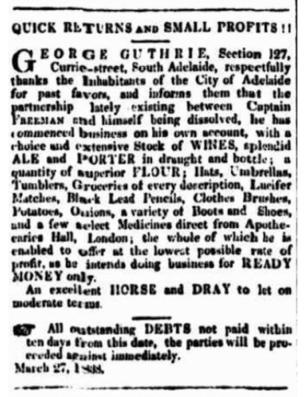
George Guthrie's advertisement, April 1838 [South Australian Gazette and Colonial Register, 28 April 1838]
Towards the end of 1838 Freeman left South Australia for "Danby Park, near Launceston" and appointed John Walker as his agent with power of attorney to manage and selectively sell his remaining South Australian properties (8). On 12 October 1838 Andrew Harriott, an experienced inn-keeper from Sydney, purchased two adjacent plots from Freeman for "the sum of sixty pounds of lawful British money..." According to the Memorial that summarised the conveyance of the property, the sale comprised "all that piece or parcel of land situate lying and being in Currie Street in the Town of Adelaide and being a portion of the one acre section of Town land No 127... comprising lots No 3 and 4 respectively in a certain division made of the said section... [and as] abuts on the East with a frontage of fifty feet to a certain street called Gray Street, on the West with an end of fifty feet to lot 2 in the said division, on the north with an end of forty three feet to Currie Street aforesaid and on the south with an end of forty three feet to lot 9 in the said division..." (9) Lots 3 and 4 were located on the western corner of Currie and Gray Streets, the current site of the Edinburgh Castle. This is illustrated in the diagram below. The Memorial does not mention Guthrie as a third party nor any buildings or other improvements on the allotments, as we would expect if these lots included Guthrie's Hotel.
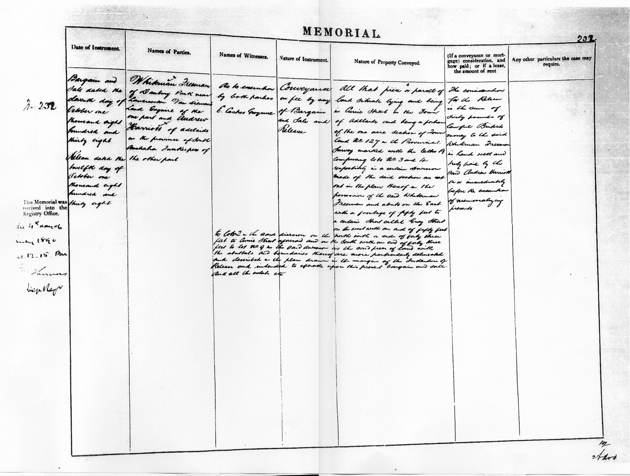
Memorial No 232 summarising the transfer of lots 3 and 4 from Freeman to Harriott, 12 October 1838 [Registrar General Office (Land Titles Office)]
(Click for enlargement)
According to their greatx3-grand-daughter, "Andrew Harriott (or "Harriot") [1804-1867] and Margaret Halliday [1808-1871] emigrated from Scotland to New South Wales sometime between 1832 and 1835. Margaret was the younger sister of Andrew's late wife Ann. The law of the time forbade their marriage, so to make life easier Margaret travelled as 'Mrs Harriott'. They later [14 January 1846] married in Adelaide..." (10) In Sydney Harriott held the license for the "Burns' Head Public-House, George Street, near the King's Wharf"; in order to improve and maintain public order in and around central Sydney, in late June 1838, the New South Wales authorities rejected the renewal of Harriott's and about 70 other licenses. (11) Two months later, on 28 August 1838, Harriott and his family and, presumably, the proceeds from the sale of the "Burn's Head" sailed for South Australia. (12) Evidently Harriott was able to establish a residence and business in Adelaide within just a few months: the "General Directory for Adelaide and Port Adelaide", compiled in late 1838, lists "Harriott, Andrew, storekeeper, Currie Street". (13) Harriott's Scottish origins might explain the name of the Edinburgh Castle.
In March 1839 both Guthrie and Harriott applied for and were granted licenses for separate premises under new and more stringent regulations which effectively licensed not only individuals but a designated property: Guthrie on 22 March "for the sale of wine, beer and other fermented liquors" in Guthrie's Hotel and Harriott on 29 March as a "General Publican" in the "Edinburgh Castle", both in Currie Street. (14)
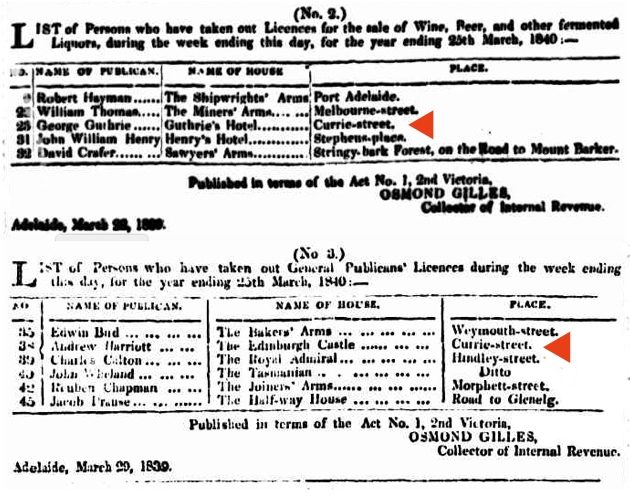
List of the licensees approved on 22 and 29 March 1839
[South Australian Gazette and Colonial Register, 30 March 1839]
Inexplicably, on the day after he was granted the license, Guthrie advertised the "old-established Public-house in Currie-Street... for sale, with immediate possession... this substantial dwelling-house consists of 39 feet frontage by 15 feet wide, with a good cellar and other conveniences. The ground comprises 52 [sic] feet frontage in Currie-street by 50 feet, fenced with stringy-bark." (15) The "old-established Pubic House" did not sell, probably because Guthrie could not claim legal ownership of the property. Nevertheless Guthrie continued to trade as a victualler through 1839 and, in December, he renewed the annual license for Guthrie's Hotel, implying that he intended to continue at least until the license expired at the end of 1840 or until the property was purchased. (16)
Throughout 1840 Walker sought to sell the remaining allotments of Town Acre 127 and including the property, lots 1 and 2, occupied but not owned by Guthrie. Freeman acknowledged that at sometime in the past he had agreed to sell the land to Guthrie for £150 however Guthrie seems to have defaulted on the payments. In May 1840, therefore, Freeman wrote to Walker that he "never sold Guthrie the lots Nos 1 & 2 in Section No 127 nor did I ever receive one farthing from him on account of them or the house that was on them, nor did I ever sign any papers or documents stating that I had sold it [to] him but I agreed to let him have them on his paying me the £150" and then instructed Walker "to take possession of them unless he immediately pays you the amount." (17) Whether or not Guthrie did vacate the property, it was advertised for urgent sale in early September 1840: "To be Sold by Public Auction... A substantial built house, on Acre 127, next Edinburgh Castle [my emphasis], with double brick chimney, and three rooms, let at 27s. per week, 42 feet frontage to Currie Street, by 50 feet deep." (18)
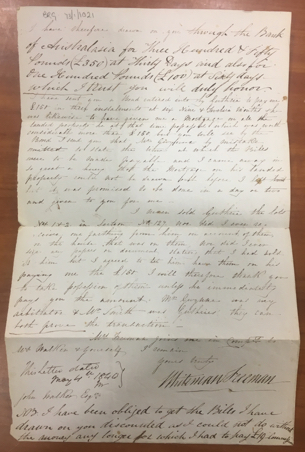
Letter Whiteman Freeman to John Walker, 4 May 1840 [State Library of South Australia, Business records of Piper, Bakewell and Piper, BRG73/1021/1] (Click for enlargement) |
 |
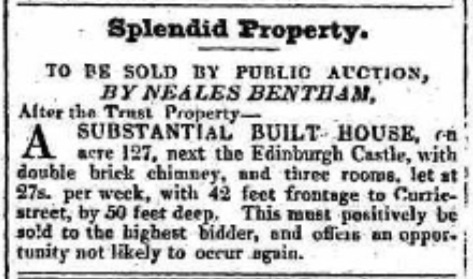
Advertisement for the sale of lots 1 and 2 [Adelaide Chronicle and South Australian Literary Record, 2 September 1840] |
In February 1841 Andrew Harriott purchased lots 1 and 2, adjacent to his existing lots 3 and 4 of Section 127 on which stood the Edinburgh Castle, for £80. The property included "all that piece or parcel of land situated on the South side of Currie Street... part of the acre section of Town Land No 127... which piece of land contains in width as well as in front next Currie Street as at the back next a piece of land belonging to the said Andrew Harriott severally forty two feet or thereabouts and in depth backwards as well as on the east side next premises in the occupation of the said Andrew Marriott as in the west side next the acre section No 126 severally fifty feet or thereabouts and also all that cottage or tenement now standing and being on the said piece of land...". The indenture that documented the sale represents a three-way agreement between Freeman, Harriott and, significantly, Guthrie; in it, Freeman acknowledges that "sometime... [he] contracted with the said George Guthrie for the absolute sale to him of the piece of land herein described and granted and released or intended so to be at the sum of fifty pounds. And that George Guthrie has since contracted and agreed with the said Andrew Harriott for the sale to him of the same piece of land together with the [buildings] erected and built thereon free from all encumbrances at the sum of eighty pounds." Under the agreement, Harriott payed £30 to Freeman and £50 to Guthrie. (19)

Memorial No 2365 summarising the transfer of lots 1 and 2 from Freeman to Guthrie and Harriott, 12 February 1841 [Registrar General Office (Land Titles Office)]
(Click for enlargement)
The location of Guthrie's Hotel and the Edinburgh Castle
The plans below show the locations of the four lots on the north-western corner of "Town Acre 127" and the buildings erected on them by the early 1840s. The map on the right reproduces a plan drawn in the margin of the actual conveyancing instrument for the sale of lots 3 and 4; it corresponds to the descriptions and dimensions of the properties given in the two conveyancing instruments and summarised in the two Memorials cited above. The plan on the left superimposes, at the same scale, the location of the relevant lots on that part of the map drawn from George Kingston's survey in 1842 (20) and shows the buildings erected on the properties. This gives us the most likely locations of Guthrie's Hotel and the Edinburgh Castle.
From the detail provided in the two Memorials, Guthrie's Store (1837-1839) or, later, Guthrie's Hotel (1839) could have been located only on lots 1 and 2 and it is highly likely that the vacated Guthrie's Hotel is building A on the Kingston map. Significantly, the dimensions of the "old-established public house" advertised by Guthrie in March 1839 are consistent only with the pisé building (A) on lots 1 and 2, not the larger and more complex building (B and C) shown on lots 3 and 4. Similarly, the original Edinburgh Castle could have been located only on lots 3 and 4, perhaps initially as the pisé building (B) and later as the stone building (C). Earlier structures (D on Lot 9) were absorbed later into the Edinburgh Castle as Harriott acquired adjoining property and the whole site was consolidated onto one Land Title before the hotel was substantially rebuilt in 1878.
The pisé structures (B) on the Kingston plan of 1842 hints that there was most likely a building on lots 3 and 4 before Freeman sold it to Harriott in October 1838 and it is possible, but highly unlikely, that this was the initial site of Guthrie's Store. There is nothing but circumstantial evidence for this possibility. On the other hand it is equally possible that someone other than Guthrie occupied the building, most likely Whiteman Freeman himself who on at least one occasion gave his address as "Town Acre 127". (21) The Memorial for the sale of lots 3 and 4 does not mention any financial interest that Guthrie might have had in the property.
From 1839 to 1841, then, Guthrie's Hotel and the Edinburgh Castle co-existed on separate, albeit adjacent, sites and, also from 1839, were separately licensed. As would be required to claim continuity in licensing, Guthrie's Hotel did not precede the Edinburgh Castle on the same site. At best we can claim only that, from 1837 to 1841, Guthrie's Hotel was located on the property on which the Edinburgh Castle now stands. Guthrie's Hotel and the Edinburgh Castle were originally separate enterprises, in separate buildings, on separate properties and, most importantly, separately licensed. The Edinburgh Castle cannot claim the distinction of being the oldest continually licensed extant hotel in South Australia. (And which South Australian pub is the oldest - if that really matters - will require just a bit more research!)
Notes (please use the browser 'back' button to return to the text)
* On the naming of the Edinburgh Castle: the Edinburgh Castle Hotel has been called at different times the "Edinburgh Castle Inn", the "Edinburgh Castle Tavern" or, as originally licensed in 1839, just as the "Edinburgh Castle". Although these name changes might well have reflected changes in what the pub provided (typically "tavern" = drink and possibly food, "inn" = drink, food, basic accommodation, stabling, watering etc, "hotel" = more sophisticated accommodation, drinka dn food etc) this wouldn't have applied at this time. To avoid any confusion, I have adopted the simpler, original name, the "Edinburgh Castle".
On the naming of Guthrie's Hotel: As Bob Hoad indicated, most of the early public houses were temporary structures and many of even the most substantial resembled general stores and sold more than just alcoholic beverages. (J.L. Hoad, South Australian Hotel Records Prior to 21 February 1839..., 1988, p.11) Guthrie's premises were generally known as "Guthrie's Store" and Guthrie was described as a storekeeper or victualler, at no time that I can find as a publican or inn-keeper or similar. The first time his "house" was called "Guthrie's Hotel" was when it was licensed in March 1838.
1 J.L. (Bob) Hoad, Hotels and Publicans in South Australia 1836-1984, 1986
2 State Records, Research Note No 143, anon, The first South Australian Hotel to celebrate its hundredth anniversary, 1964
3 J.L. Hoad, South Australian Hotel Records Prior to 21 February 1839, including identifying South Australia's oldest hotel by identifying the State's first licensed Publicans, and the title and location of the premises, 1988
4 Adelaide City Council, Pubs in the City of Adelaide, 2012, p.13
5 For examples: "Welcome to Adelaide - our city of grand old pubs", 2014; and "SA History Hub: Pubs", 2015; W Prest (ed.), The Wakefield Companion to South Australian History, 2001, p.436
6 See the facsimile of Guthrie's license reproduced in J.L. Hoad, South Australian Hotel Records Prior to 21 February 1839..., 1988, p.15; also State Records Office, GRG45/13/00000/1, Register of publican's and other licences, 1837-1849
7 South Australian Gazette and Colonial Register [SAG&CR], 28 April 1838
8 State Library of South Australia, Business records of Piper, Bakewell and Piper, solicitors, BRG73/1021, Letter Whiteman Freeman to John Walker, 25 October 1838
9 Registrar General's Office (Land Titles Office), Memorial No 232, dated 4 May 1890[!]; summarises the conveyancing of the land on 12 October 1838
10 Pioneers Association of South Australian, Andrew Harriott, publican who became a farmer, January 2016
11 Commercial Journal and Advertiser [Sydney], 30 June 1838
12 South Australian Maritime Museum, Passengers in History: Andrew Harriott; Pioneers Association of South Australian, Andrew Harriott, publican who became a farmer, January 2016
13 Royal South Australian almanack for 1839..., [1839]; reprinted in the South Australian Record, 1 November 1839
14 SAG&CR, 30 March 1839
15 SAG&CR, 23 March 1839
16 State Records Office, GRG45/13/00000/1, Register of publican's and other licences, 1837-1849; J.L. Hoad, South Australian Hotel Records Prior to 21 February 1839..., 1988, p.26
17 State Library of South Australia, Business records of Piper, Bakewell and Piper, solicitors, BRG73/1021/1, Letter Whiteman Freeman to John Walker, 4 May 1840
18 Adelaide Chronicle and South Australian Literary Record, 2 September 1840
19 Registrar General's Office (Land Titles Office), Memorial No 2365, 1 July 1892[?!] but summarising the conveyancing of the land on 12 February 1841
20 State Library of South Australia, George Strickland Kingston, To her most Gracious Majesty Adelaide, the Queen Dowager, this map of Adelaide, South Australia..., 1842
21 SAG&CR, 29 July 1837
Posted: 29 March 2019. Original content © Craig Hill 2019.
"Historical significance" is more than just being the first or the oldest...
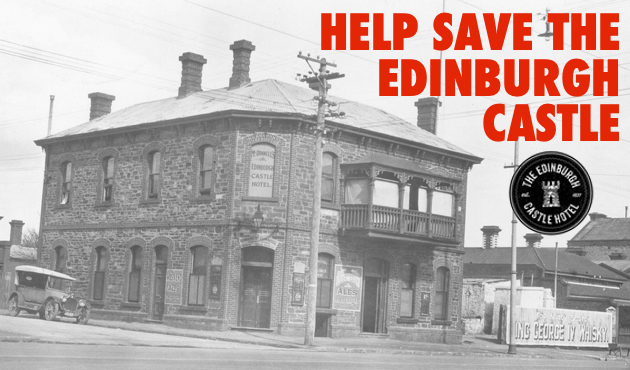
As widely reported in the local press, the Edinburgh Castle in Currie Street, Adelaide, has closed, currently remains for sale and is, therefore, vulnerable to redevelopment and likely (partial) demolition. Only the facade has any heritage protection. And, as anyone knows who has enjoyed a quiet drink in its beer garden (probably the last remaining genuine beer garden in the City of Adelaide) or a not-so-quiet drink when there was live music in the side bar, there's much more to this pub than just stone, brick and mortar.
Help save The Edinburgh Castle, not only for its heritage architecture but as a working pub.
The Edinburgh Castle might not be the oldest continuously licensed public house in South Australia but it definitely has "history". If this pub goes, so too does a tangible reminder of over 180 years of South Australian history and the chance for another century or two, bringing together not only West Adelaide locals but also those from further afield.
Please sign the on-line petition to have the Edinburgh Castle listed on the State Heritage Register. This is the first and critical step in preserving the building and at least limiting any future 'adaptive reuse'. As the authors of Time Gentlemen, Please! The story of the fight to save the Aurora Hotel, 1983 noted, "If it's not on the Hertiage List, it's on the Hit List."

